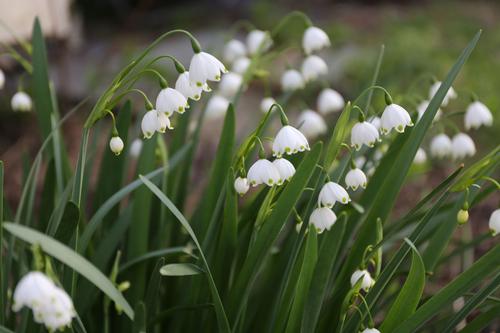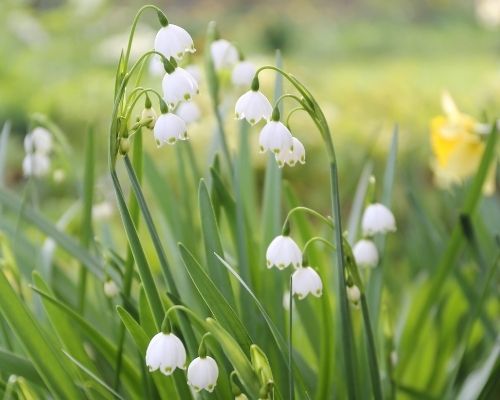Your Guide to Planning, Planting, and Growing Leucojum
Leucojum, also known as summer snowflake, is a carefree and adaptable spring-blooming bulb. Though the flowers and foliage are similar to snowdrops, leucojum grows at least twice as tall and blooms about two months later, usually just after the daffodils. The pure white, bell-shaped flowers are decorated with lime green accents and dangle in clusters from arching stems. The bulbs are reliably perennial, and you can expect them to bloom every spring for years to come.
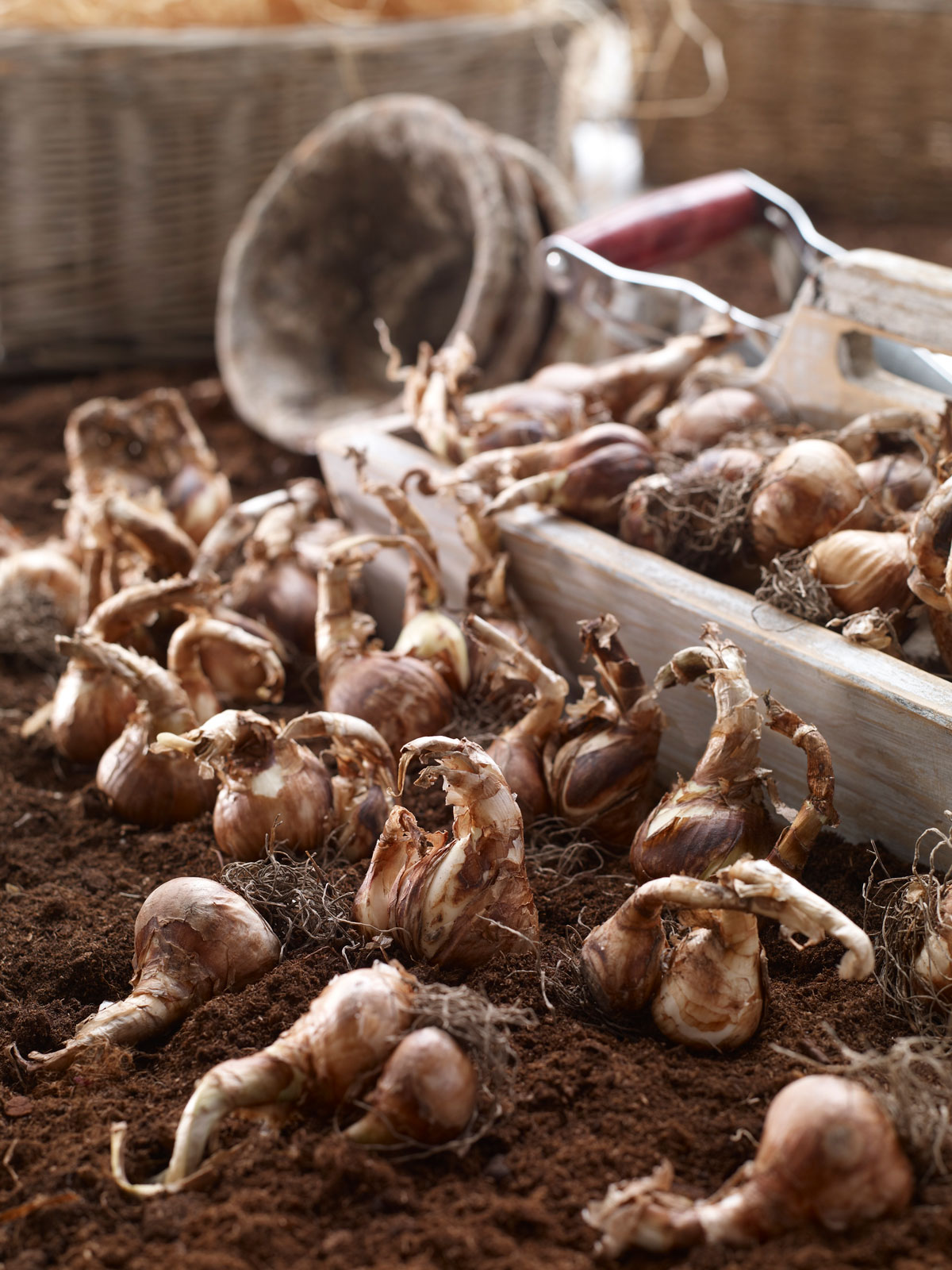
Plan for Success
Sun and Shade: Leucojum will grow and bloom in sun or partial shade.
Hardiness Zone: The bulbs are winter hardy in growing zones 4-8.
Soil Conditions: Leucojum is not fussy about soil conditions and will tolerate acidic, neutral or alkaline soils. The bulbs need moisture early in the growing season, but when they are dormant during the summer months, the soil can be lightly moist or quite dry. Avoid soggy soil.
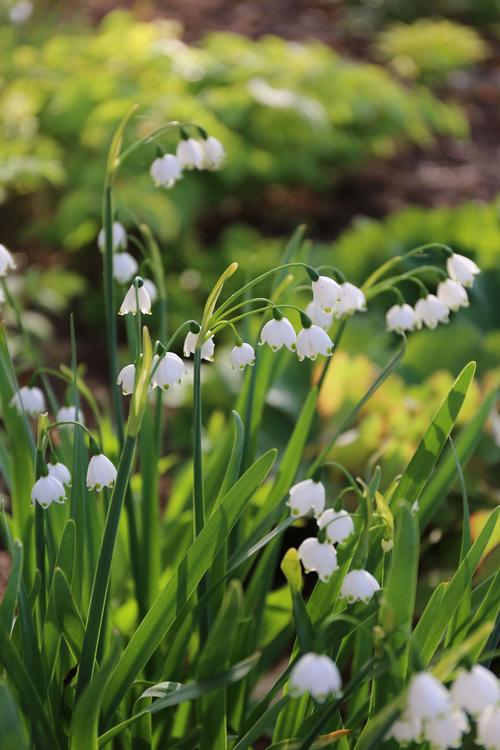
Where to Plant Leucojum
In the wild, leucojum grows at the edge of woodlands where the soil is moist and the plants are lightly shaded. This makes it well-suited to shade gardens and woodland gardens, as well as wildflower meadows.
Over time, leucojum bulbs will form a grassy clump of foliage that stands about 18” tall. In flower gardens, leucojum is a long-lived, well-behaved plant and makes an ideal companion for other shade lovers such as pulmonaria, trillium, primroses and bleeding heart.
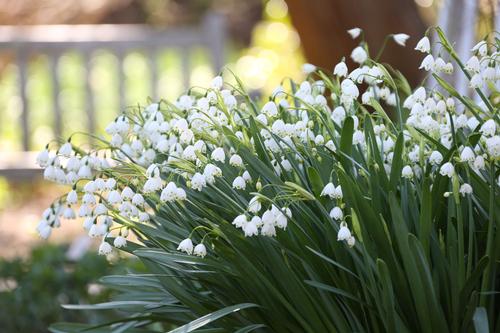
How to Plant Leucojum
When to Plant: Plant the bulbs in fall, any time before the ground freezes, between late September and the end of November.
Depth and Spacing: Plant the bulbs 5 to 6” deep and 5 to 6” apart on center.
Planting Tips: To get the most natural look, plant leucojum in groups of 6 to 10 bulbs. These long-lived perennials may take a couple years to bulk up, but once they do, you'll enjoy flowers every spring for years to come.
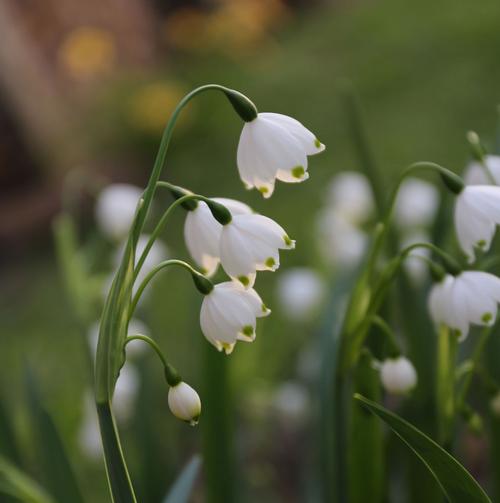
What to Expect in Spring
Leucojum blooms for 2-3 weeks in mid to late spring, at approximately the same time as most tulips.
Once established, the plants are long-lived and dislike being moved. If a clump gets too large for the space, dig up the bulbs in early summer after the foliage has turned yellow. Divide and replant.
Leucojum grows more rapidly in warm climates and may spread itself around. This is usually considered a good thing.
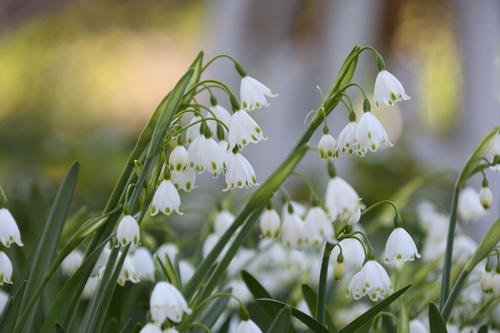
Caring for Leucojum After They Flower
Like other spring-blooming bulbs, these plants use their foliage to produce energy for next year's flowers. Once the plant has finished blooming, you may cut off the spent flowers and stems, though it’s not necessary. Allow the foliage to continue growing until it withers and fades away, which usually happens about 6 weeks after flowering.
Mulching around the plants with compost will feed the bulbs, improve the soil, and help control weeds.
